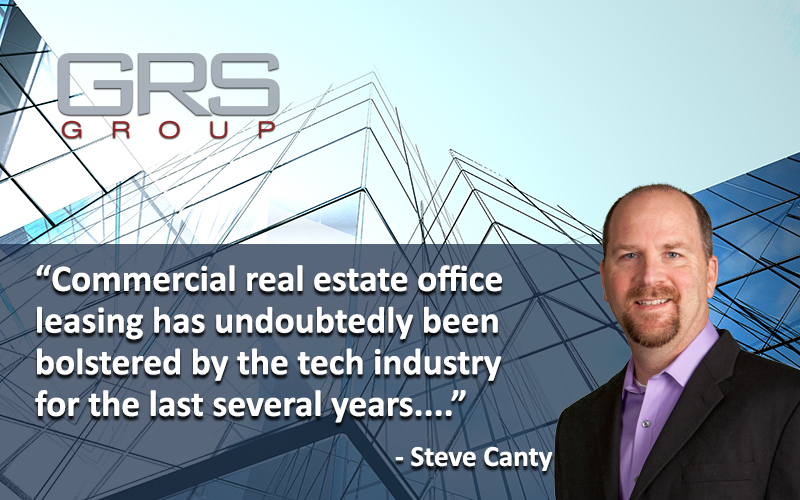
Steve Canty
Director, GRS Group
(858) 433-0441
[email protected]
Commercial real estate office leasing has undoubtedly been bolstered by the tech industry for the last several years. But there is more to it than that, according to a recent Cushman & Wakefield report (download here).
STEM (science, technology, engineering, and mathematics) jobs combined are all gobbling up major amounts of square footage.
Though tech is taking up 20-to-25-percent of all new leasing activity, the other industries with it are taking up some serious space, accounting for one million new jobs added between 2010 and 2017, Cushman says, making it grow by 29.7 percent during that time, taking over financial services.
Professional and technical services firms are expected to lease the most space between now and 2026, followed by tech-information companies like Facebook and Google, then traditional financial outfits.
There are reportedly 21 U.S. markets that make up for about 50 percent of this growth. The top five, in order with total job numbers are: New York City (225,610); Washington, D.C. (193,830); San Jose (132,140); Seattle (128,140); and Chicago (123,580).
Meanwhile, Marcus & Millichap has released second-quarter office data on 52 U.S. markets. Listed among them are the top five STEM markets that were cited by Cushman.
In the case of New York, office development is on a serious upswing. There are 8.8 million square feet of office development in the city, primarily in Brooklyn and Manhattan, which is helped by a current vacancy rate that is reportedly just under 11 percent.
In the case of Washington, D.C., offices, “ corporate expansions and relocations are fueling demand for office space in the metro”, Marcus says, which will push up vacancy, though rents have trended upward as of late. One of the major projects in the works is the new 760,000-square-foot headquarters of the Advisory Board in the East End.
Back to STEM, in particular, the Pew Research Center put out a fact sheet about these types of jobs. The average STEM worker with some college experience makes just over $54,700 per year, while those with a similar education make 26 percent less.
This is obviously not just beneficial for the workers themselves, but it is bound to boost other types of commercial real estate where they are concentrated, such as retail and multifamily housing.
As these types of occupations are more and more prevalent in the U.S. workforce, they will surely lift up the entire commercial real estate industry as a whole, based on their strong growth and demographics.
About GRS Group:
GRS Group is a leading provider of commercial real estate (“CRE”) services worldwide. With offices across the United States, Europe, and affiliates around the globe, GRS Group provides local market knowledge with a global perspective for institutional real estate investors, occupiers and lenders worldwide. The GRS Group team has evaluated and advised on over $1 trillion in CRE transactions.

